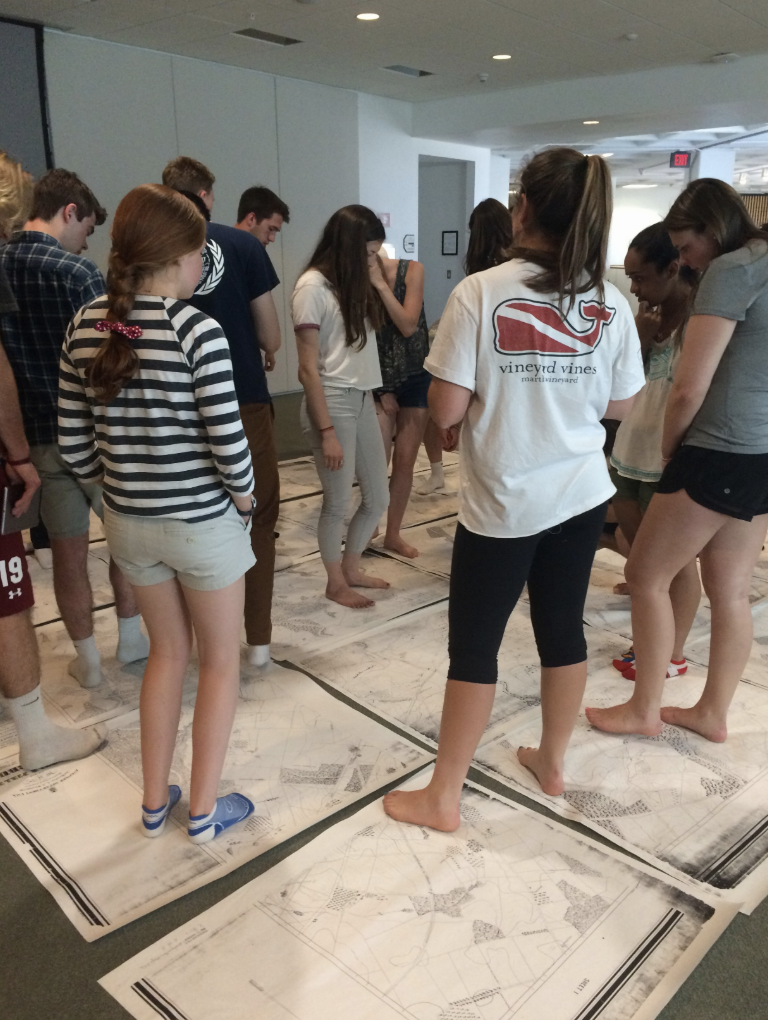Introducing… Katie McDonough
What’s your name?
My name is Katie McDonough.
What’s your background?
I am a historian of eighteenth-century France, with a focus on the history of infrastructure. I was lucky to be at Stanford in the early days of the Spatial History Project, where I began to learn about Geographic Information Science. Spatial analysis was a way for me to analyze political, economic, and social change on a provincial scale during highway construction campaigns from about 1730 to 1790.
After I completed my PhD (Stanford, 2013), teaching helped to crystallize my research interests. I became further interested in the relationship between transforming the built environment (shout out to my Nature & Empire students at Bates College) and reforming political institutions. I was also lucky at Bates to develop an experiential course on the long history of mapping technologies (see the photo from our day trip to visit Anne Knowles at the University of Maine in Orono below). This course was a foundation for my second major research project on the history of geographic information from the Scientific Revolution until today.

After Bates, I held a digital humanities postdoc at Western Sydney University. (Some of this work from Australia about applying Natural Language Processing tools like Named Entity Recognition to humanities projects is forthcoming in the International Journal for Geographic Information Science.) Most recently, I spent a year as the digital history specialist in the Department of History & Center for Interdisciplinary Digital Research at Stanford University.
It is the combination of my work on eighteenth-century history, the history of science and technology, and digital spatial analysis that explains why I was drawn to Living with Machines. The technologies of surveying, construction, maintenance, and reform apply at many scales and levels of abstraction: transportation construction, archival systems, state oversight processes, census record keeping, etc. I want to understand how and why people of all kinds created, lived with, rejected and adapted these technologies. Answering “why?”often includes asking “where?”. This has made database design, machine-readable historical spatial information, and data visualization key tools and resources for my research.
In one sentence, what is your role on the project?
I am one of the History postdocs.
What excites you about the project?
- Illuminating experiences about how technologies impact everyday life. For example, analyzing how people built, used and reacted to new transportation infrastructures while continuing to depend on older technologies.
- Developing research questions that are both computationally challenging and historically significant.
- Putting ideas about digital history workflows into practice (space for experimentation, collective learning, and adaptable collaborative structures).
What challenges do you see ahead?
It’s not a trivial thing to work outside the framework of a project with a pre-determined research question. LwM is an opportunity to play with scholarly primitives (in no particular order) from History, Digital Humanities, Data Science, and Library & Information Studies. I’m excited to travel on different pathways that take our team from question generation to publication.
What’s the last (non-work) book you read, exhibition or performance you saw?
Sally Rooney, Conversations with Friends
Finally, where can people find out more about you and your work?
My Turing Institute profile documents my ongoing research. You can also find me on twitter @khetiwe24.
